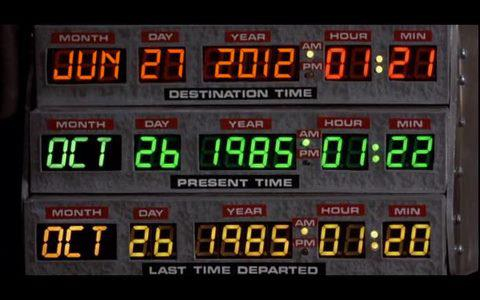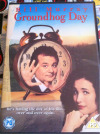
Oh good, it’s that time of year again, when Back to the Future date hoaxes do the rounds on Twitter and Facebook. And the rest of us bang our heads on the table in despair.
Look, I don’t blame the people who start these things, who photoshop a date in 2010 or 2011 or 2012 onto a screengrab of the DeLorean’s date readout. They’re trying to wind up the internet, and they’re succeeding. It’s an old joke, now, but if people keep falling for it they’re going to keep doing it.
But the people who keep spreading it around, and making it so easy to wind everyone up… ARGH. Why do I let it bother me? I wonder to myself. I mean, I’m a massive pedant, everyone knows that. But this one gets my back up more than most – and I think it’s because I love BTTF so much – it’s one of the most truly delightful, joyous, wonderful things that modern pop culture has ever created – that it irritates me that other people don’t care enough to get it right.
I mean, look: if you like BTTF enough that you think it will be pretty cool when we finally land on the future date featured in the film (and it will), then surely you should at least know these two basic facts:
1. Every year featured in the Back to the Future trilogy ends in a 5.
2. The first Back to the Future film is about travelling BACKWARDS in time, not FORWARDS.
Beyond those two fundamentals, however, as a Public Service Announcement I thought it would be a good idea to compile a list of all the dates referenced in the BTTF films – so that next time one of these spreads around, there’s a handy and quick reference by which to confirm that it’s utter bollocks. So here it is.
Back to the Future
The dates the Doc punches in when showing Marty how the controls work are:
- July 4th 1776 (“the signing of the Declaration of Independence”)
- December 25th 0000 (“the birth of Christ”)
- November 5th 1955 (“a red letter day for science”)
This last date is the date that Marty gets transported back in time to, as it’s the one left on screen when the Libyans arrive. Despite what some Twitterers say, the Doc never puts in “a random date”.
The date on which lightning strikes the clock tower and Marty returns to 1985 is:
- November 12th 1955
The date in 1985 that Marty returns to is:
- October 26th 1985
The date the Doc travels to at the end is:
- An unspecified day and month in 2015
Back to the Future Part II
The date the Doc brings Jennifer and Marty to (and thus, the ACTUAL “Future Day”) is:
- October 21 2015
The date Old Biff travels to and gives the Almanac to his past self is:
- November 12 1955
The date in “alternate” 1985 that Marty and the Doc return to is:
- October 26th 1985
The date Marty and the Doc go back to retrieve the Almanac is also:
- November 12 1955
The date the Doc accidentally travels back to, because of the lightning strike jolting the time circuits (the ONLY time a “random” date is travelled to) is:
- January 1 1885
Back to the Future Part III
The date Marty leaves 1955 to go back to the Old West:
- November 16 1955
The date Marty arrives in the Old West:
- September 2 1885
The date Marty leaves the Old West:
- September 7 1885
The date Marty arrives back in 1985 and the DeLorean is destroyed:
- October 27th 1985
So there we go. Now, STOP IT.






Recent Comments